Comprehensive retrospect and future perspective on bacteriophage and cancer
- PMID: 39501333
- PMCID: PMC11539450
- DOI: 10.1186/s12985-024-02553-1
Comprehensive retrospect and future perspective on bacteriophage and cancer
Abstract
Background: Researchers gradually focus on the relationship between phage and cancer.
Objective: To summarize the research hotspots and trends in the field of bacteriophage and cancer.
Methods: The downloaded articles were searched from the Web of Science Core Collection database from January 2008 to June 2023. Bibliometric analysis was carried out through CiteSpace, including the analysis of cooperative networks (country/region, institution, and author), co-citations of references, and key words.Visual analysis of three topics, including gut phage, phage and bacteria, and phage and tumor, was conducted.
Results: Overall, the United States and China have the most phage-related research. In terms of gut phage, the future research directions are "gut microbiome", "database" and "microbiota". The bursting citations explored the phage-dominated viral genome to discover its diversity and individual specificity and investigated associations among bacteriome, metabolome, and virome. In terms of phage and bacteria, "lipopolysaccharide" and "microbiota" are future research directions. Future research hotspots should mainly concentrate on the further exploration and application of phage properties. As for phages and tumors, the future research directions should be "colorectal cancer", "protein" and "phage therapy". Future directions are likely to focus on the research on phages in cancer mechanisms, cancer diagnosis, and cancer treatment combined with genetic engineering techniques.
Conclusion: Phage therapy would become a hot spot and research direction of tumor and phage research, and the relationship between phage and tumor, especially colorectal cancer (CRC), is expected to be further explored.
Keywords: Bacteriophage; Cancer; CiteSpace; Phage therapy; Tumor.
© 2024. The Author(s).
Conflict of interest statement
The authors declare no competing interests.
Figures

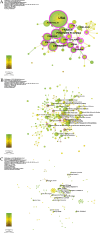
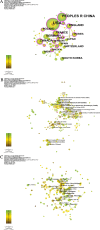


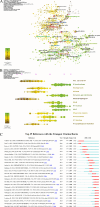

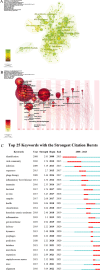

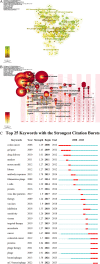
References
-
- Yang J, Wei H, Zhou Y, Szeto CH, Li C, Lin Y, Coker OO, Lau HCH, Chan AWH, Sung JJY, et al. High-fat diet promotes colorectal tumorigenesis through modulating gut microbiota and metabolites. Gastroenterology. 2022;162(1):135-149.e132. 10.1053/j.gastro.2021.08.041. - PubMed
-
- Nakatsu G, Zhou H, Wu WKK, Wong SH, Coker OO, Dai Z, Li X, Szeto CH, Sugimura N, Lam TY, et al. Alterations in enteric virome are associated with colorectal cancer and survival outcomes. Gastroenterology. 2018;155(2):529-541.e525. 10.1053/j.gastro.2018.04.018. - PubMed
Publication types
MeSH terms
Grants and funding
LinkOut - more resources
Full Text Sources
Medical
Research Materials

